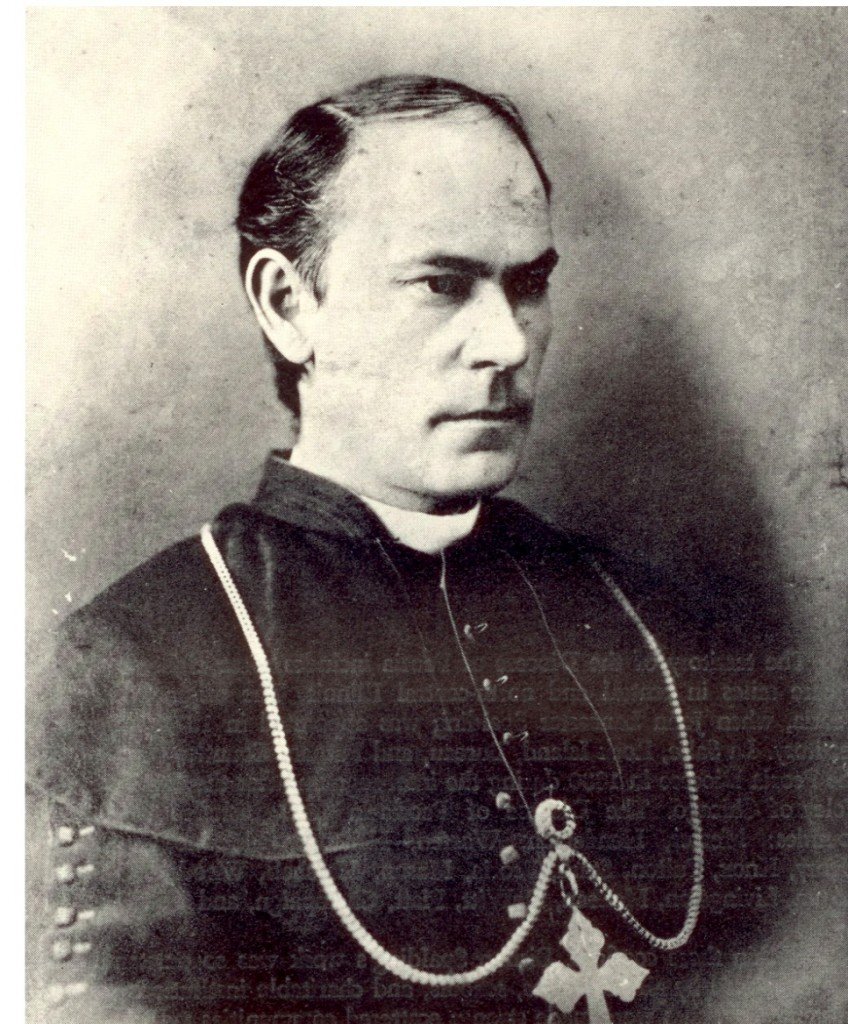Most Reverend John Lancaster Spalding
First Bishop of Peoria, 1877-1908
The Most Reverend John Lancaster Spalding was born in Lebanon, Kentucky, June 2, 1840, as the eldest of nine children and tutored by his well educated mother.
Ordained December 19, 1863, in Louvain, Belgium, at the age of 23.
He was consecrated Bishop by Cardinal James Gibbons on May 1, 1877, at St. Patrick Cathedral, New York, just three weeks short of his thirty-seventh birthday. On May 22, 1877, he was formally installed by Bishop Thomas Foley of Chicago in St. Mary's Church.
“…The day that John Lancaster Spalding came to Peoria was a city holiday. Businesses closed for the occasion and nearly the whole town turned out to greet him as he arrived in late afternoon at the railroad station and given a king's welcome. A special committee had journeyed to Bureau Junction to escort the bishop into his see city, and crowds waited to give him a military salute.
Upon his arrival, the bishop was placed in a carriage, a band played and hundreds lined the route from the station to his stopping points. At his first he was scheduled to talk in a hall with a capacity of 5,000, but the crowd was so large it overflowed into the street, so he spoke from the steps for best advantage. From there the entourage continued to St. Mary's Church and rectory, then located on Jefferson Street, where additional crowds waited in front of the rectory.
Leads Diocese for 31 Years
For the next thirty-one years, Bishop Spalding headed the Peoria diocese with style and verve, enhancing his reputation as an orator and supporter of Catholic education. Already in 1871, following the example of his uncle, Bishop Martin Spalding, he was tirelessly campaigning for the establishment of the Catholic University of America which culminated in its opening in November 1889.
Cardinal Gibbons noted that "…all great works have their inception in the brain of some great thinker. God gave such a brain, such a man, in Bishop Spalding. … If the Catholic University is today an accomplished fact, we are indebted for its existence in our generation, in no small measure, to the persuasive eloquence and convincing arguments of the Bishop of Peoria.”
Almost twenty years after having been the youngest member of the Second Council and named one of the preachers at the age of 26, he also attended the Third Plenary Council of Baltimore in 1884. He was personally involved in the development of the Baltimore Catechism. Later, as a president of the Catholic Educational Exhibit at the 1893 World’s Columbian Exposition in Chicago, he took this opportunity to highlight and emphasize the importance and role of the Catholic schools.
Bishop Spalding openly appreciated and supported establishment ethnic parishes of every nationality. He defended their enrichment for the country and diocese in the distinct cultural and religious heritage of each nationality.
In 1902 President Theodore Roosevelt appointed Bishop Spalding a successful mediator in the anthracite miners’ strike.
Due to a debilitating stroke in 1905, three years later Bishop Spalding resigned his position. He was named titular Archbishop of Scytopolis. During his life he authored numerous volumes, among them the biography of his uncle, Archbishop Martin Spalding of Baltimore, and titles such as "Essays and Reviews", "Lectures and Discourses", and "Education and the Higher Life". Under the name of Henry Hamilton, he wrote a book of poetry, "The Poet's Praise" and "Opportunity and Other Essays".
After his death on August 25, 1916, Pope St. Pius X said of him a rare praise, "Few bishops had so great an influence on the life of the people, even outside of religion and outside of the Catholic denomination, as had Bishop Spalding."




